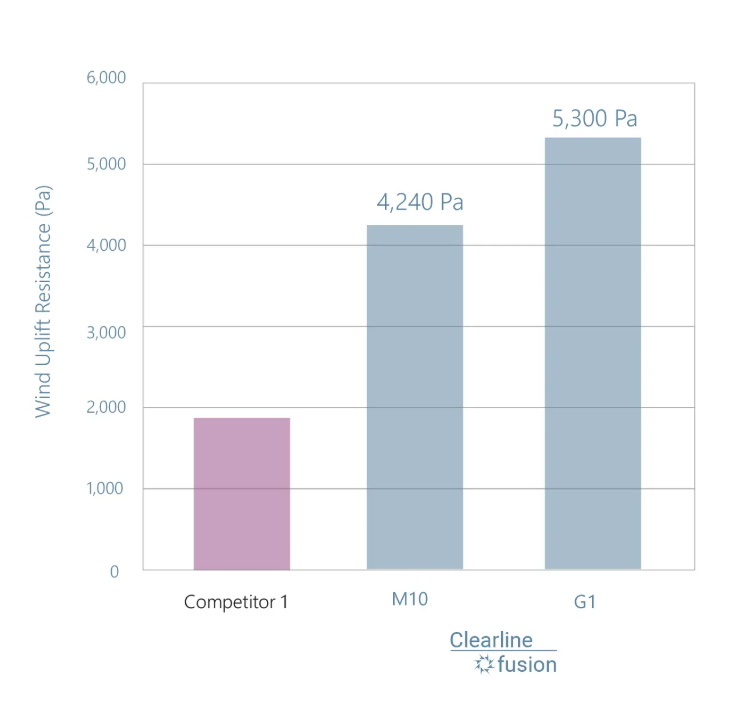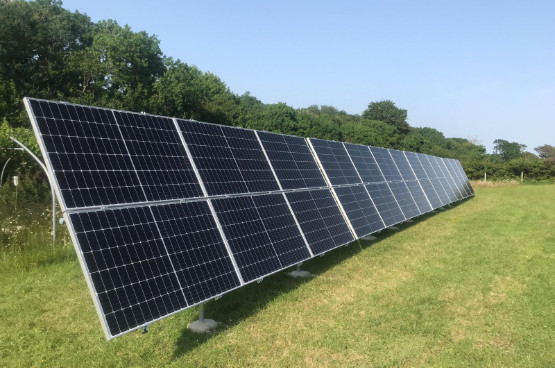Storm-Ready Solar: How Viridian Solar with their Clearline Fusion Range Stands Amidst UK Weather Challenges
As Storm Herminia impacts the UK, it’s crucial for homeowners to ensure their solar panels comply with wind load resistance regulations.
While it has always been the responsibility of solar installation companies to securely fix panels and prevent them from being blown off roofs and still is. The Microgeneration Certification Scheme (MCS) for PV systems puts pressure on installers to an even greater emphasis on this requirement. Homeowners who are looking to install solar PV must understand the significance of wind load when selecting their solar PV installer & products.
Why Wind Loads Matter for Solar Panels
Wind loads (the forces exerted by wind on structures) can compromise the safety and longevity of solar installations if not properly accounted for. High winds, like those generated by Storm Herminia, can cause panel uplift or structural damage, posing risks to both property and personal safety. Several factors, such as roof shape, building height, and geographical location, all play a role in determining the wind loads a solar system must withstand.
A Simplified Guide to Calculating Wind Loads for Solar Panels
Understanding Design Wind Load
The wind load on a solar panel installation depends on multiple factors, including:
- Location: Wind speeds generally increase as you move north in the UK.
- Site specifics: Altitude above sea level and building height.
- Proximity to the sea: Panels closer to the coastline experience higher wind loads.
- Shelter: Urban areas with surrounding buildings provide more protection than open rural areas.
- Topography: Wind speeds are higher on slopes and hilltops.
Roof-Specific Considerations
For pitched roofs:
- Roof type (e.g., mono pitch, duo pitch, hipped).
- Roof pitch angle.
- Panel location (different roof zones experience varying wind pressures).
- Installation method (above-roof mounts, roof-integrated systems, or tile replacements).
For flat roofs:
- Panel placement (edge, corner, or central zone).
- Presence of a parapet around the roof.
The Calculation Process
Wind loads are calculated using Eurocode 1 (BS EN 1991), which provides the approved method for determining peak velocity pressures. This process involves:
- Determining peak velocity pressure: This takes into account wind speed, altitude, and location.
- Applying pressure coefficients: These adjust for factors specific to the installation, such as roof shape and panel placement.
- Multiplying by a Safety Factor: The calculated pressure is then multiplied by 1.35 to ensure a safety margin, arriving at the Design Load.
Why does Viridian Solar Stand Out?
Viridian Solar makes this process easier by providing user-friendly spreadsheets for both pitched and flat roofs. These tools allow solar installers to quickly and accurately calculate wind loads for each specific installation.
Accurate wind load calculations are critical to ensuring that solar panels are securely installed, particularly in regions prone to high winds, such as coastal or elevated areas. With these tools and guidelines in place, homeowners can trust that their solar installations meet safety standards and are built to withstand the UK’s challenging weather conditions.
Why Choose SunGift Solar
- Expertise and Experience: With 20 years of industry experience and knowledge, SunGift Solar offers professional, high-quality solar installations tailored to your needs.
- Tailored Solutions: We provide personalised solar solutions to maximise your energy efficiency and savings based on your specific requirements.
- Top-Quality Products: SunGift Solar only install premium, reliable products from leading manufacturers, ensuring long-lasting performance.
- End-to-End Service: From consultation to installation and aftercare, our team of experts are with you every step of the way, ensuring a seamless experience.
- Accredited and Trusted: As an MCS and RECC certified installer, SunGift Solar guarantees compliance with industry standards and a commitment to sustainability.

 Solar PV Contractor of the Year 2024
Solar PV Contractor of the Year 2024


